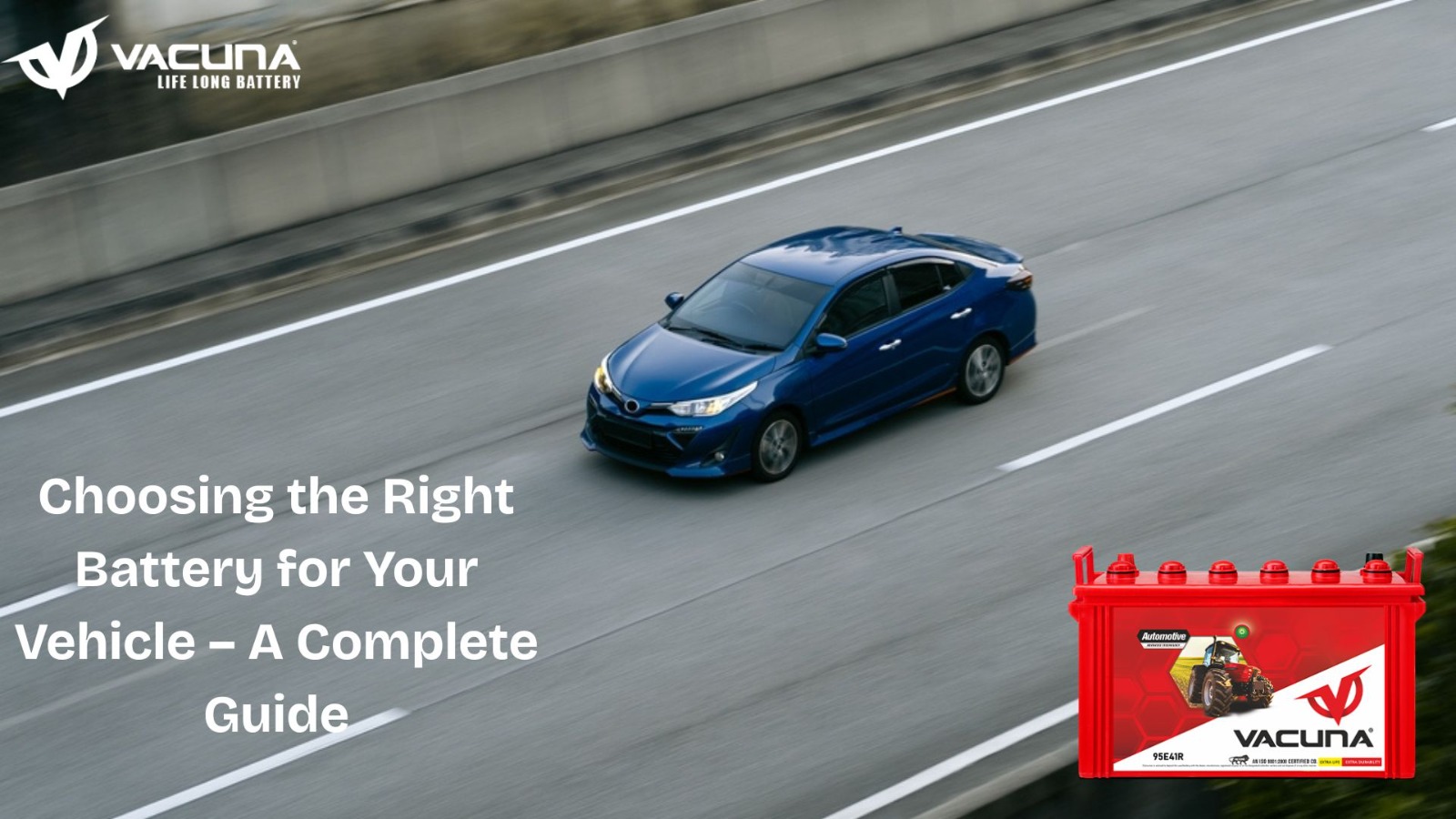Your vehicle’s battery does far more than start the engine—it quietly powers the systems that make every ride smooth, safe, and convenient. From headlights to infotainment, the battery keeps everything alive. Yet, like all components, it wears out. Recognizing the early warning signs can save you from being stranded or shelling out for emergency repairs.
At Vacuna, a leading automotive battery manufacturer in Meerut, we’ve seen it all—and we’re here to help you spot the red flags before they turn into roadside regrets.
1. Slow Engine Crank or Hesitation at Start
If your engine groans or takes longer than usual to fire up, it could signal a tired battery. A healthy battery starts your engine almost instantly. Sluggish starts are a clear cue that the charge is weakening.
2. Flickering Lights or Inconsistent Power
When your headlights dim at idle or your stereo cuts out unexpectedly, your battery may not be delivering steady power. Electronics behave erratically when the battery can’t meet the demand—something we’ve addressed with every Vacuna battery, engineered for stable energy delivery.
3. Dashboard Battery Light Illuminates
If the battery icon on your dash lights up, don’t ignore it. It could be a voltage issue or an alternator fault. Either way, it’s a call to action. As a trusted automotive battery manufacturer in Meerut, Vacuna recommends a professional check immediately.
4. Corrosion Around the Battery Terminals
White or bluish deposits on battery terminals reduce connectivity and charging efficiency. Regular checks and cleaning help, but persistent build-up could be a sign of deeper issues requiring attention—or even replacement.
5. Swollen or Warped Battery Case
If the battery case looks bloated or deformed, it’s been stressed—often by overheating or overcharging. A distorted battery is a hazard. Vacuna’s batteries are tested for high-heat resistance, ensuring safe and durable performance in Indian climates.
6. Frequent Need for Jump Starts
Needing to jump your car more than once or twice in a short span? That’s not normal. Constant jump-starts suggest the battery’s capacity is depleted. It’s time for a new one, and Vacuna batteries are known across Meerut for their long-lasting reliability.
7. Battery Age Is 3 Years or More
Even if performance seems fine, most batteries begin to degrade after 3 years. If yours is nearing this age, have it tested. A preemptive replacement is smarter than a sudden breakdown.
Final Thought
Your battery talks—you just need to listen. Whether it’s a flicker, a crank, or a light on your dashboard, staying alert saves you stress and time. Vacuna, a forward-thinking automotive battery manufacturer from Meerut, builds batteries that go the distance.
Stay alert. Stay ahead. Stay charged with Vacuna.




